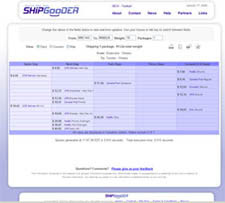 PMA EXPO 2008, the Photo Marketing Association's annual imaging show, kicks off tomorrow in Las Vegas (see last post). This means that everyone involved with everything from compact digital cameras, to high-end DSLRs, photo frames, printers, memory cards, and the like, will be traveling over to Sin City to show off or check out the latest and greatest in imaging for 2008.
PMA EXPO 2008, the Photo Marketing Association's annual imaging show, kicks off tomorrow in Las Vegas (see last post). This means that everyone involved with everything from compact digital cameras, to high-end DSLRs, photo frames, printers, memory cards, and the like, will be traveling over to Sin City to show off or check out the latest and greatest in imaging for 2008.If 2007 was any indication, 2008 is poised to be an exciting year in the category. The Canadian Imaging Trade Association (CITA) reports that sales of digital cameras grew 26% in 2007, which was more than twice as much as they had expected! Manufacturers shipped 8 million more digital cameras to retailers in Canada in 2007 than in 2006.
There are likely many reasons for the continually strong market. For one, compact digital cameras are getting more and more affordable, making upgrading a more viable option. For example, Fuji will be showing off an 8 MP, 3x optical zoom ultra-thin digicam at the show that will sell for just about $150 in Canada!
The same goes for the price of digital SLRs, thus encouraging enthusiasts who would otherwise not have purchased a DSLR to join the pack. In fact, according to the CITA, DSLRs led the sector's growth in 2007, with 210,000 units shipped, representing a 45% increase from 2006. This year, customers can continue to purchase DSLRs like Canon's Rebel XSi DSLR (which will also be on display at the show) at sub-$1,000 price points.
When you think back to digital camera and DSLR pricing even just a few years ago, it's amazing to see how things have reached an entirely new pricing level altogether.
Another potential driving factor for increased purchase behaviour is that, as larger capacity memory cards become available (and for less money to boot), people are taking more and more pix. As they get better at doing so, they become more interested in digital imaging. More interest leads to better familiarity and understanding of the technologies, which in turn leads to a longing for more advanced, upgraded models. Imagine how many digital cameras went out as gifts this past holiday season!
Which brings us to another obvious reason for the surge: new and exciting technologies within the cameras themselves. And if the pre-show information that some of the biggest players have already sent out is any indication, we have plenty to look forward to in that department. (visit http://www.marketnews.ca/ for some highlights).
Meanwhile, here are a few pre-show observations for what's on tap for 2008:
In the DSLR arena, Live View, which lets you preview the shot in the LCD rather than the viewfinder, seems to be a more common feature this year. This is particularly useful when you want to snag a picture of a subject that's at an awkward angle, like a musical artist over a crowd of people.
Last year, I observed the "hot" features in the compact digicam arena to be face detection, high ISO, bright LCD screens, and image stabilization capabilities, and these all remain popular in 2008. However, each manufacturer is adding greater functionality within each technology, whether it be the ability to identify more faces, differentiate adult visages from children's, or even a smiling or blinking person from a stone-faced or closed-eye subject; or more advanced stabilization that can detect and compensate for fast motion of the subject. Automation of features is also increasingly popular, allowing technophobic, entry-level users to truly push a single button to snag a great shot.
Finally, although the megapixel race is still out in full force, it appears to be flattening out a bit, topping at about 10 MP, with 8 MP as the perceived "sweet" spot. This is a good sign that consumers might just be catching on to the fact that there are more important aspects to a camera than just higher numbers.
PMA EXPO 2008 is sure to be chocked full of goodies. Stay tuned to this blog, http://www.marketnews.ca/, and http://www.hereshow.ca/ for coverage, including live, video demonstrations right from the show floor.
[Photo: Nikon's S550 digital camera, scheduled for available in the Spring, offers a 10 MP sensor, 5x optical zoom, and new Smile and Blink-Warning modes. In the smile recognition mode, the camera will automatically take a photo once the subject smiles; while blink-warning will display a message if it detects a blink, then magnify the shot on screen to allow you to confirm or deny the claim. Additional features include ISO 2000; 2.5” LCD; macro shooting as close as 10 cm; three movie modes; and 50 MB of internal memory.]














